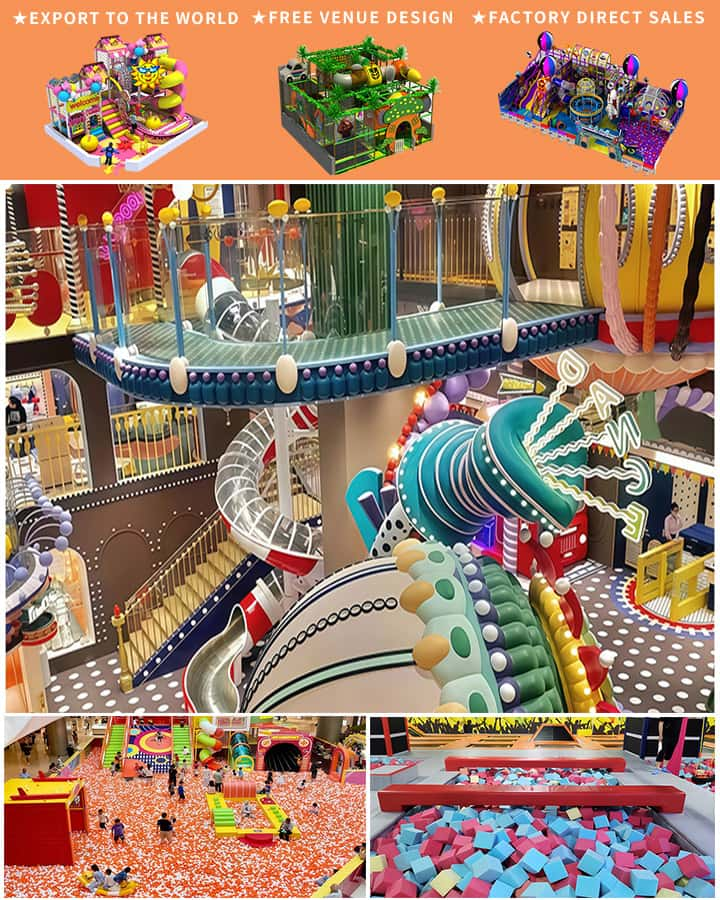Starting an indoor playground business in Canada can be a highly rewarding venture, offering a fun and safe environment for children to play while providing parents with a convenient option for entertainment. However, launching such a business involves careful planning, strategic decision-making, and thorough understanding of legal requirements. Here’s a comprehensive guide on how to start an indoor playground business in Canada, ensuring you cover all essential aspects from conception to operation.
Market Research and Planning
1. Conduct Market Research
Begin by conducting detailed market research. Identify the demand for indoor playgrounds in your desired location. Look into demographic trends, local competition, and potential customer base. Use surveys, focus groups, and online research to gather data. Understand what features and services parents are looking for, such as safety, educational value, and variety of play equipment.
2. Create a Business Plan
Draft a solid business plan outlining your objectives, target market, financial projections, and marketing strategies. A well-structured business plan will serve as your roadmap and is crucial when seeking financing or partnerships. Include sections on:
- Executing Summary
- Company Description
- Market Analysis
- Organization and Management
- Services/Products Line
- Marketing and Sales Strategies
- Funding Request (if applicable)
- Financial Projections
Legal Requirements and Permits
3. Choose a Business Structure
Decide on the type of business structure that suits your needs—whether it’s a sole proprietorship, partnership, corporation, or limited liability company (LLC). Each has its own legal and tax implications, so choose wisely based on your long-term goals and consult with a legal advisor if necessary.
4. Register Your Business
Register your business name with the appropriate government authorities. This may involve registering with Innovation, Science and Economic Development Canada (ISED) for a federal business number and with your provincial or territorial government for additional registrations.
5. Obtain Necessary Permits and Licenses
Secure all required permits and licenses. These can vary depending on your location and the nature of your business but commonly include:
- Business license
- Health and safety permits
- Fire department inspections and permits
- Zoning compliance approvals
 Ensure compliance with local municipal by-laws and provincial regulations regarding indoor playgrounds.
Ensure compliance with local municipal by-laws and provincial regulations regarding indoor playgrounds.
Location and Setup
6. Choose the Right Location
Selecting the right location is critical. Look for a spacious area with high foot traffic, good visibility, and accessibility. Consider factors like parking availability, proximity to residential areas, and competition. Leasing might be a more flexible option than purchasing property initially, allowing you to adjust based on business performance.
7. Design the Indoor Playground
Create a safe and engaging environment for children. Work with professional designers and architects who specialize in recreational spaces. Ensure that the design includes:
- Safe, age-appropriate play structures
- Soft flooring to cushion falls
- Adequate ventilation and climate control
- Clear sightlines for supervision
Incorporate themes that resonate with children, such as jungle safaris, space adventures, or fantasy castles, to create an immersive experience.
Equipment and Safety Standards
8. Source High-Quality Equipment
Invest in high-quality, durable play equipment that meets safety standards. Partner with reputable suppliers who provide products compliant with Canadian Safety Standards and global safety certifications. Regular maintenance and safety checks are vital to ensure ongoing safety for your patrons.
9. Prioritize Safety Protocols
Develop comprehensive safety protocols to protect children and staff. Implement measures such as:
- Regular equipment inspections and maintenance
- Training staff on emergency procedures and first aid
- Clear signage indicating rules and safety guidelines
- Supervised play areas to prevent accidents
Staffing and Operations
10. Hire Qualified Staff
Recruit friendly, responsible, and trained staff. Look for candidates with experience in childcare, recreation, or customer service. Conduct thorough background checks and provide training on safety protocols, customer service, and operational procedures.
11. Implement Efficient Operations
Streamline your operations with effective management practices. Utilize technology for booking systems, customer relationship management (CRM), and point-of-sale (POS) transactions. Maintain cleanliness and hygiene standards to create a welcoming environment.
Marketing and Community Engagement
12. Develop a Marketing Strategy
Create a robust marketing strategy to attract customers. Use a mix of online and offline tactics such as:
- Social media advertising to reach local families
- Search engine optimization (SEO) for your website
- Flyers and posters in community centers and schools
- Partnerships with local businesses for cross-promotions
13. Engage with the Community
Build strong relationships within the community. Host events such as open houses, themed playdates, and holiday parties. Offer loyalty programs and discounts to encourage repeat business and word-of-mouth referrals.
Financial Management
14. Budget Wisely
Prepare a detailed budget covering startup costs, operating expenses, and contingency funds. Monitor cash flow meticulously and adjust your spending as needed. Consider initial costs such as:
- Leasing deposits and utilities setup
- Equipment purchases and installations
- Initial marketing campaigns
- Staff salaries and training
15. Seek Financing if Needed
If your budget exceeds available funds, explore financing options such as small business loans, grants, or investor funding. Present your business plan and financial projections to potential lenders or investors to secure the necessary capital.
Continuous Improvement
16. Gather Feedback and Adapt
Regularly seek feedback from customers to identify areas for improvement. Stay updated with industry trends and continually enhance your offerings to keep your indoor playground competitive and appealing.
Conclusion
Starting an indoor playground business in Canada requires meticulous planning, adherence to legal requirements, and a commitment to safety and customer satisfaction. By following these steps and maintaining a proactive approach to business operations and community engagement, you can build a successful and enduring indoor playground that brings joy to children and peace of mind to parents.




